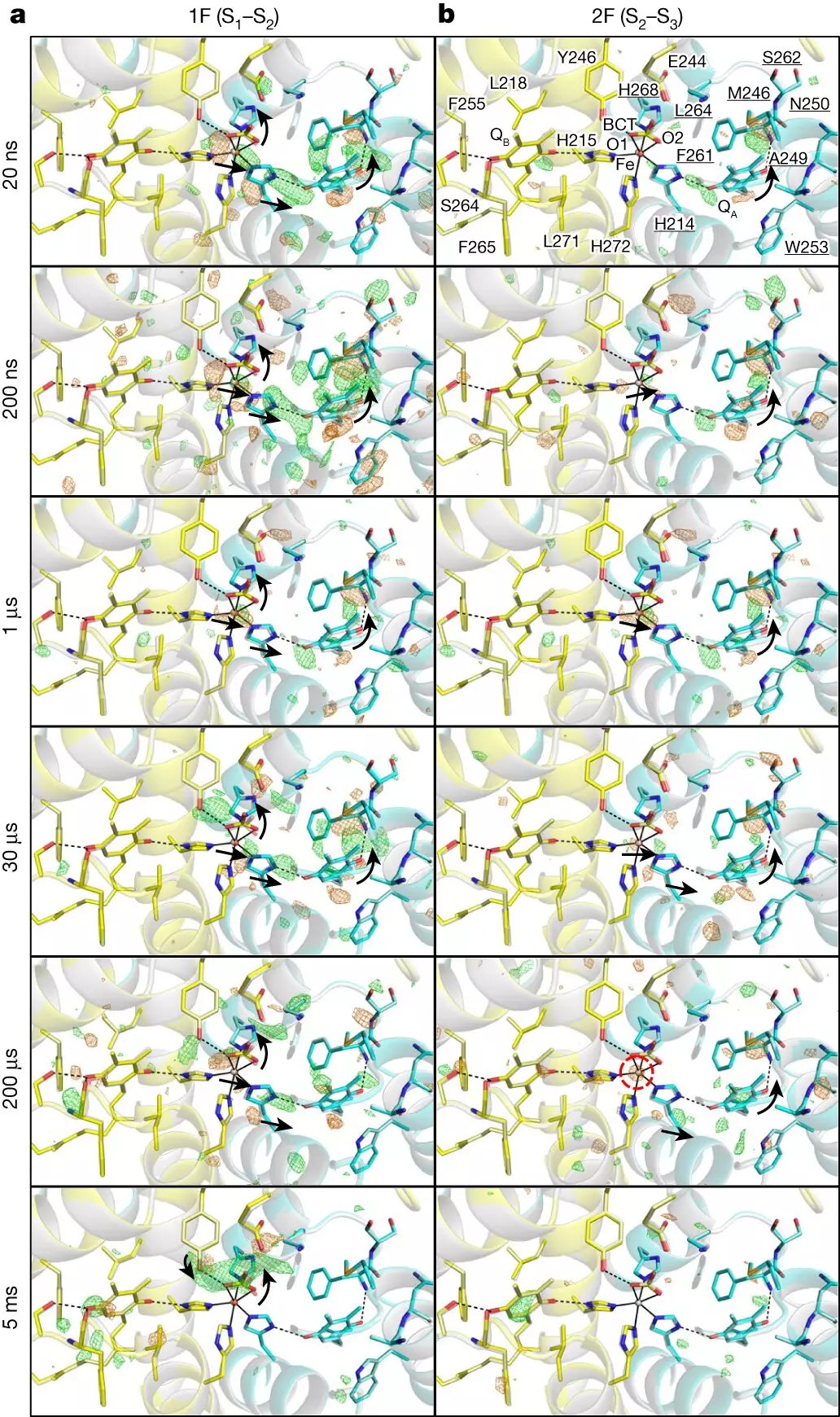The process of photosynthesis is crucial for the existence of life on earth, as it serves as the primary mechanism through which plants, algae, and certain bacteria convert light energy into chemical energy. By unraveling the molecular mechanisms underlying photosynthesis, scientists can unlock new possibilities in the fields of biotechnology and renewable energy.
Photosystem II (PSII) is a vital protein complex that plays a central role in the process of photosynthesis. By catalyzing the oxidation of water and producing dioxygen using sunlight, PSII initiates the fundamental step of oxygenic photosynthesis. Despite years of research, the structural dynamics of PSII during the water-splitting reaction, especially on short timescales, have remained largely unexplored.
New Insights from Research
Professor Michihiro Suga and Professor Jian-Ren Shen from Okayama University in Japan have utilized pump-probe serial femtosecond X-ray crystallography (TR-SFX) to delve into the intricate structural dynamics of PSII. By subjecting PSII microcrystals to laser flashes and capturing X-ray diffraction patterns at various time delays, the researchers were able to track minor structural alterations in PSII, ranging from nanoseconds to milliseconds post-flash illumination.
The findings, published in Nature, shed light on the crucial transitions occurring in PSII from the S1 to S2 and S2 to S3 states. These transitions are essential for understanding key events such as electron transfer, proton release, and substrate water delivery. The research also highlighted the rapid structural alterations in the YZ tyrosine residue, indicating fast electron and proton transfer processes.
Read More: Exploring the Potential Heart Benefits of Finasteride
Implications for Catalyst Design
The research conducted by Professor Suga and Professor Shen has significant implications for various fields, particularly in the design of catalysts for artificial photosynthesis. By elucidating the molecular mechanisms of water oxidation in PSII, scientists can inspire the development of synthetic catalysts capable of efficiently harnessing solar energy through artificial photosynthesis.
Enhancing Agricultural Productivity and Addressing Climate Change
Moreover, understanding the structural dynamics of PSII can inform strategies for optimizing natural photosynthetic processes in crops to enhance agricultural productivity and mitigate the effects of climate change. These findings not only deepen our understanding of fundamental biological processes but also hold promise for addressing pressing global challenges related to energy sustainability and environmental conservation.
The research conducted by Professor Suga and Professor Shen represents a significant step towards unraveling the mysteries of photosystem II and advancing our knowledge of photosynthesis. By delving into the intricate structural dynamics of PSII, scientists can pave the way for revolutionary developments in biotechnology, renewable energy, and environmental conservation.


Leave a Reply